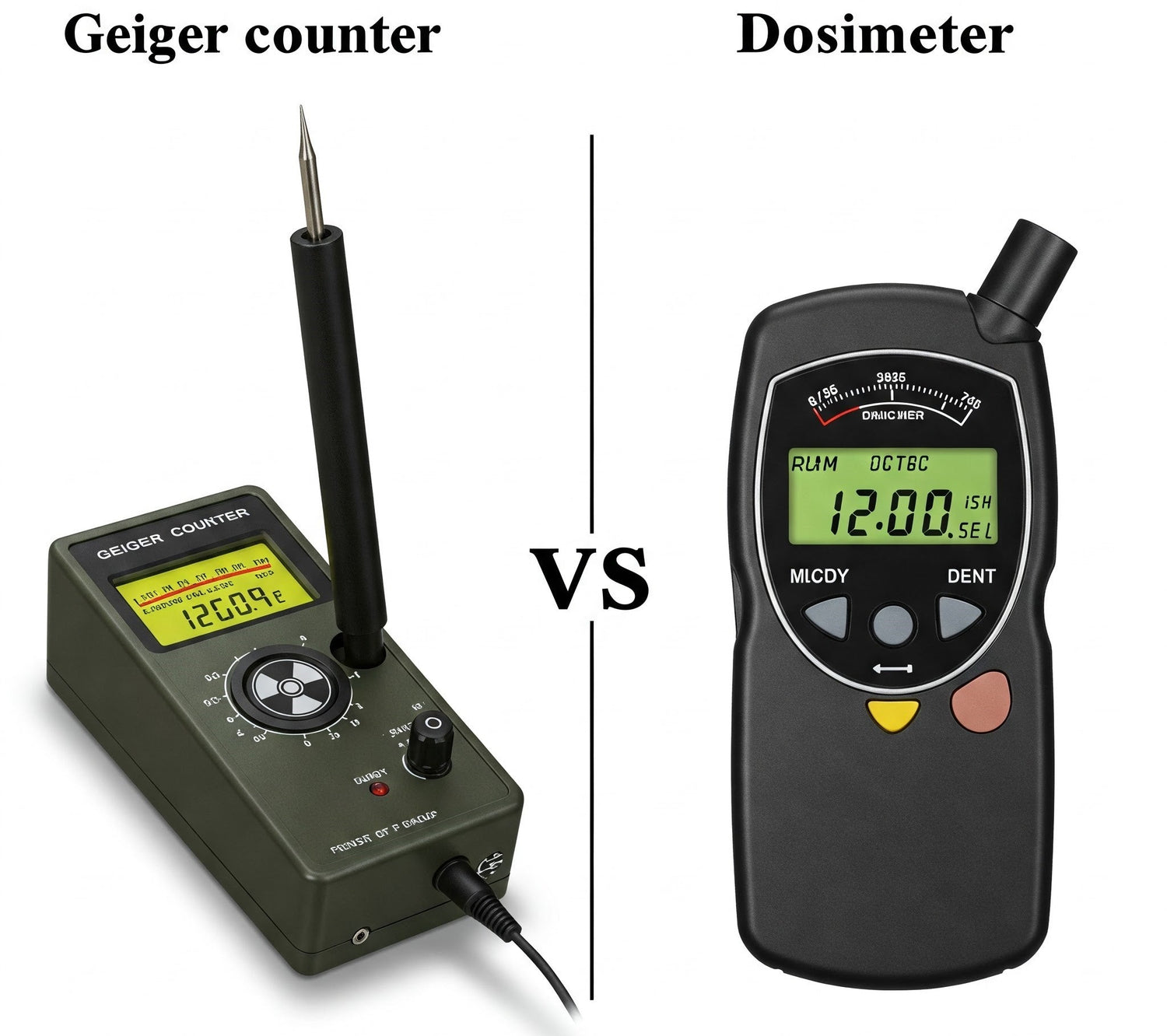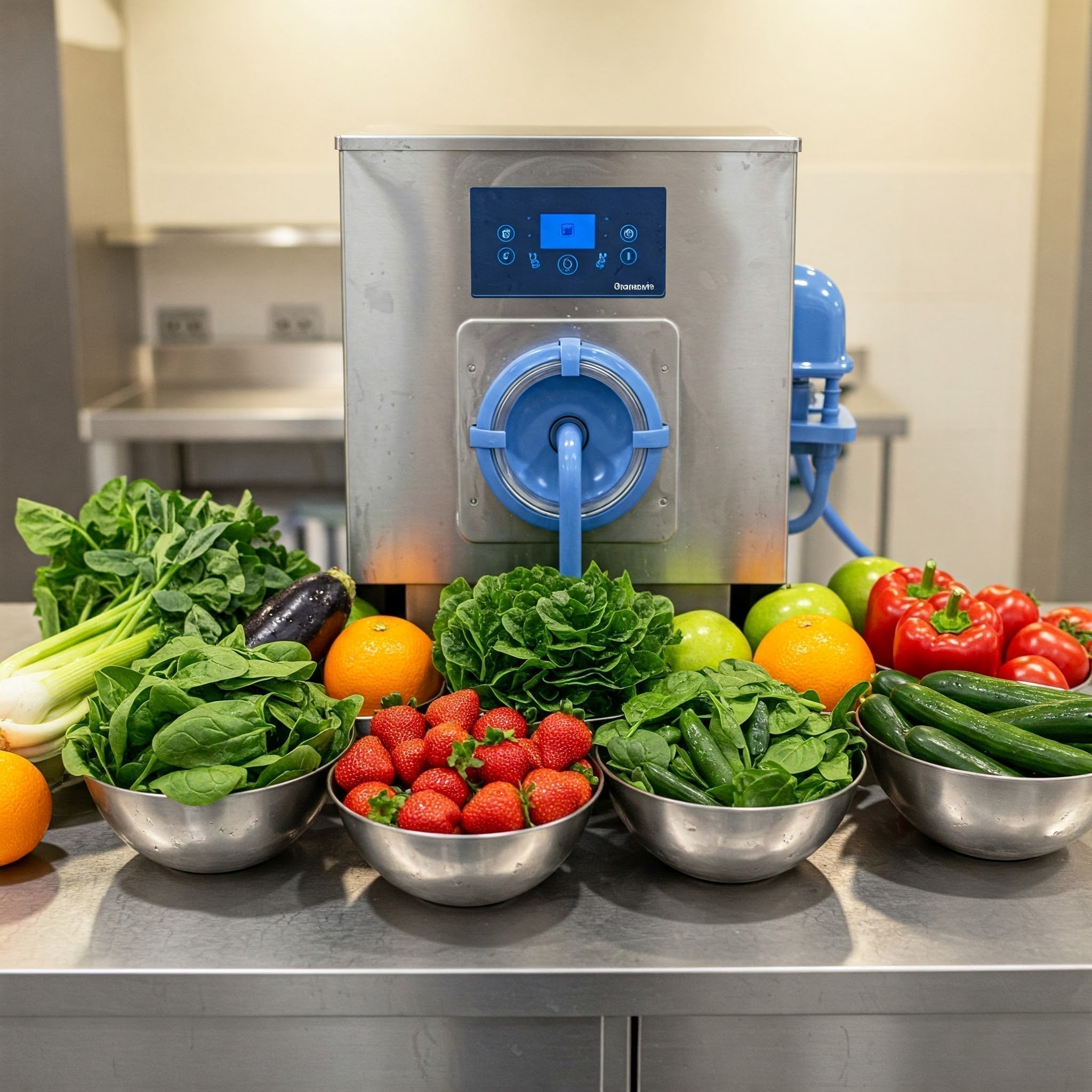Understanding the differences between a Geiger counter vs. a dosimeter can help you choose the right tool for radiation detection. Geiger counters offer real-time readings, perfect for immediate assessments. Dosimeters track cumulative radiation exposure over time, crucial for long-term safety. This article explores how each device works and their specific uses.
Key Takeaways
-
Geiger counters provide real-time detection of various types of ionizing radiation, making them essential for immediate safety assessments in environments like nuclear facilities.
-
Dosimeters measure and record cumulative radiation exposure over time, crucial for ensuring occupational safety and compliance with safety regulations.
-
The Milerd HiStand is a durable, portable personal radiation detector designed for continuous monitoring, featuring customizable alarm thresholds and extended battery life for effective radiation management.
Understanding Geiger Counters

In the realm of radiation detection, Geiger counters play an essential role. Originally conceived by Hans Geiger, these instruments utilize a Geiger-Müller tube to sense and quantify ionizing radiation. Due to their straightforward operation and dependability, simple Geiger counters are frequently selected as the initial tool for detecting radioactive emissions.
Geiger counters are capable of registering gamma radiation along with alpha particles and beta particles, offering instantaneous data critical for prompt evaluations of safety conditions. Their effectiveness and adaptability render them vital tools across numerous sectors including scientific research environments and nuclear power plant operations.
How Geiger Counters Work
At the core of a Geiger counter lies the sophisticated Geiger-Müller tube, which is specifically designed to identify ionizing radiation. It accomplishes this by producing an electrical pulse whenever the gas within the tube becomes ionized due to radiation exposure. This device is capable of detecting a variety of radioactive emissions, including alpha particles, beta particles, and gamma rays.
As radiation enters into this tube, it induces electron release from atoms in its path. These electrons subsequently cause Ionization of the gas inside. The process culminates in generating an electrical pulse that is then recorded and presented by the counter. While Geiger counters are adept at gauging radiation across various energy levels with precision, their effectiveness does differ based on radiation type—underscoring their value as indispensable instruments for measuring ionizing radiation.
Applications of Geiger Counters
Geiger counters play a crucial role in environmental monitoring by detecting and gauging radiation to uphold safety measures. These devices are indispensable within nuclear facilities for maintaining safety protocols and averting contamination through careful surveillance of radiation.
Within the confines of nuclear power plants, Geiger counters serve as vigilant sentinels, perpetually scanning for any deviations in radiation levels to ensure the protection of both personnel and the surrounding environment. They prove particularly vital during emergency scenarios where swift evaluation of radiation can starkly distinguish safe zones from areas at risk.
Beyond their application in nuclear settings, Geiger counters find utility across diverse industries and scientific research endeavors, helping maintain acceptable thresholds for exposure to prevent potential risks to people and nature alike. Their convenience in handling adds to their widespread use for dynamic on-site assessments of radioactivity.
What Are Dosimeters?

Geiger counters are utilized for instantaneous radiation detection, while dosimeters fulfill a distinct function by measuring and logging the total amount of radiation dose over an extended period. Dosimeters provide a comprehensive history of one’s exposure to radiation, which is critical for those employed in areas with possible risks of radiation such as nuclear facilities.
Dosimeters differ from Geiger counters as they focus on monitoring prolonged exposure rather than providing immediate readings. Their purpose is to guarantee that people do not exceed the thresholds deemed safe regarding their cumulative radiation dose. This difference plays a vital role in upholding workplace safety within environments prone to high levels of radiological risk.
Types of Dosimeters
There are multiple kinds of dosimeters such as stickers, badges, devices resembling pens or tubes, and those with digital displays. Every kind has benefits that suit different uses. For instance, badge dosimeters are particularly useful for workers who need to keep track of their total radiation exposure over the course of a day.
The design of a dosimeter affects how user-friendly and efficient it is in various situations. Dosimeters that are the size of a pen offer portability and simplicity in handling whereas digital versions deliver extensive and instant feedback regarding exposure levels.
Uses of Dosimeters
Dosimeters are vital for ensuring the safety of workers in nuclear facilities by monitoring their radiation exposure over time. They help ensure compliance with safety regulations by tracking cumulative exposure for individuals in high-risk roles.
Dosimeters record exposure, allowing employers to manage and mitigate radiation risks, thereby ensuring a safer working environment.
Key Differences Between Geiger Counters and Dosimeters

Although both geiger counters and dosimeters are essential tools for detecting radiation, they have distinct functions. Geiger counters provide immediate readings of radiation intensity at particular spots, enabling on-the-spot assessments. On the other hand, dosimeters accumulate data over time to give a total account of an individual’s or object’s exposure to radiation.
Due to this key distinction, geiger counters are frequently employed for prompt safety evaluations and determining doses of radiation in real-time scenarios. Conversely, dosimeters play a critical role in monitoring prolonged exposure levels and ensuring adherence to established safety guidelines.
Real-Time Detection vs. Accumulated Dose Measurement
Geiger counters are adept at offering immediate radiation detection, enabling individuals to instantaneously assess radiation levels and take appropriate action. These devices serve an essential role in scenarios where rapid readings are critical, such as during emergency reactions or regular safety inspections.
Conversely, dosimeters specialize in gauging the total amount of radiation dose accrued over a period, providing a detailed record of a person’s exposure. This capability is vital for ensuring long-term health protection and adherence to regulatory standards within professions that regularly face hazards from constant exposure to radiation.
Suitability for Different Environments
Geiger counters are employed in diverse environments for the immediate detection of radiation, and their use extends to numerous locations such as nuclear power plants and medical institutions. The portability of these devices renders them ideal for monitoring radiation levels while moving around.
In contrast, dosimeters are particularly valuable in contexts where it is necessary to monitor cumulative exposure to radiation over time. This makes them an important tool for those working within nuclear facilities or in professions associated with radiology. Both types of instruments play a critical role in maintaining safety standards and adhering to regulatory requirements within their relevant settings.
Importance of Radiation Detectors in Modern Safety

In the contemporary landscape, radiation detectors are pivotal for safety, tasked with tracking exposure levels to guard individuals and surroundings against detrimental radiation effects. Instruments such as the Milerd HiStand have been crafted to persistently monitor environmental radiation while notifying users if exposure trespasses established safe thresholds.
The deployment of reliable radiation detectors is critical in both private and professional spheres to uphold security within our modern era. These devices aid in averting excessive contact with harmful rays and guarantee adherence to protective regulations spanning multiple sectors.
Radiation Safety in Nuclear Facilities
Radiation detectors are crucial tools for ensuring safety in nuclear facilities, as they constantly track radiation levels to prevent workers and the environment from being subjected to dangerous amounts of radiation exposure.
To guarantee that these monitors deliver precise measurements and adhere to safety standards, regular testing and calibration is vital. This is especially important in expansive industrial environments where monitoring radiation exposure holds critical significance.
Public Safety and Environmental Monitoring
Radiation detectors play a crucial role in maintaining industrial and public safety, as well as monitoring the environment. They are instrumental in checking for environmental pollutants to ensure that radiation levels within communal areas stay within safe thresholds.
The Milerd HiStand is highly effective for environmental surveillance due to its robust design that’s both weatherproof and shock-resistant. Equipped with an integrated solar panel, it can function independently while persistently measuring radiation levels. This device is essential for alerting individuals when there is a breach of safe radiation limits, thereby protecting public health.
These devices are fundamental in detecting and pinpointing sources of radiation across various settings, which assists in preventing human exposure to harmful rays and helps manage potential hazards associated with them.
Why Choose the Milerd HiStand for Radiation Detection?

The HiStand by Milerd is an effective personal radiation detector, crafted to track surrounding radiation levels and alert users if these exceed safe thresholds. It serves a crucial role in detecting items contaminated with radiation as well as verifying that background radiation remains at secure levels, making it indispensable for individuals vigilant about their exposure to radiation.
Features of the HiStand
Crafted to endure harsh conditions, the HiStand boasts a robust construction that’s both waterproof and shockproof, ensuring dependable performance. The inclusion of an integrated solar panel also enables prolonged self-sufficient functioning.
The HiStand is equipped with adjustable alarm thresholds that notify users if radiation levels exceed set boundaries. This attribute renders it ideal for ongoing and independent monitoring of radiation.
Benefits of Using the HiStand
The HiStand boasts a considerable advantage in its enduring battery life, which can sustain up to 720 hours of continuous operation. This feature ensures dependable performance for prolonged periods when engaging in outdoor pursuits. Its sleek and compact construction aids in its ease of transportability, suited for an array of expeditions into the great outdoors.

In essence, the HiStand presents a synthesis of ruggedness, long-lasting independence from power sources, and easy mobility. These characteristics render it perfectly suitable for use across various settings and purposes.
Summary
Selecting the appropriate device for radiation detection is essential to safeguard against hidden dangers of radiation. Geiger counters are particularly well-suited for prompt safety evaluations and tracking environmental levels of radiation, as they offer instantaneous readings. Meanwhile, dosimeters are valuable tools in measuring cumulative exposure to radiation over time, which is important for maintaining long-term safety in environments where risks are elevated.
The Milerd HiStand merges the advantages of both devices by providing ongoing monitoring capabilities alongside design enhancements aimed at longevity and independent operation. It stands out as a superior option for both individual users and professional applications when it comes to dependable detection of radiation and managing protective measures effectively.



Leave a comment
This site is protected by hCaptcha and the hCaptcha Privacy Policy and Terms of Service apply.